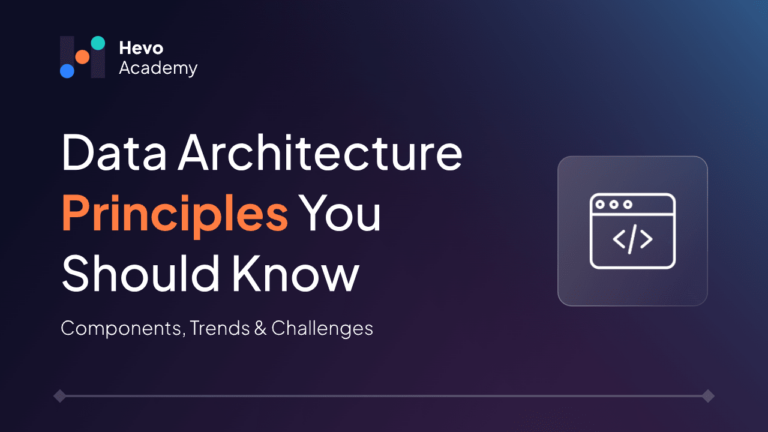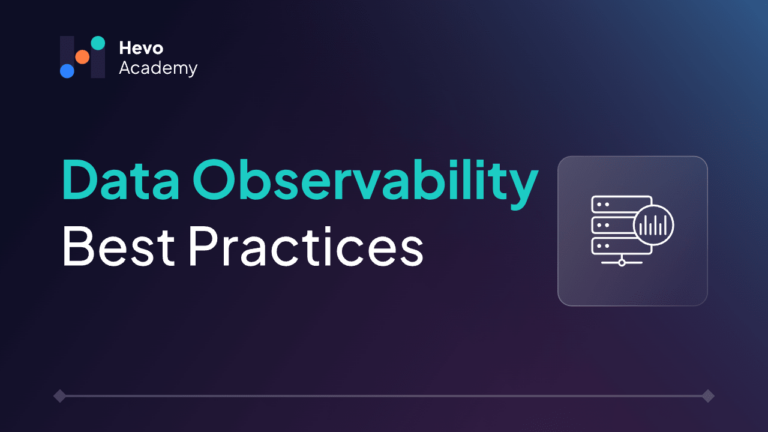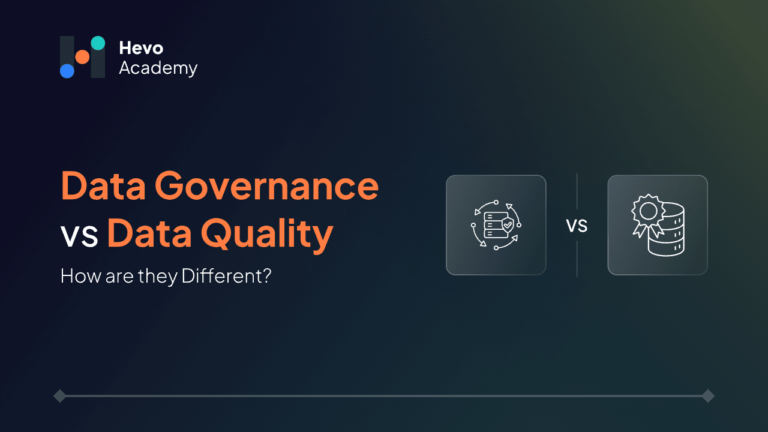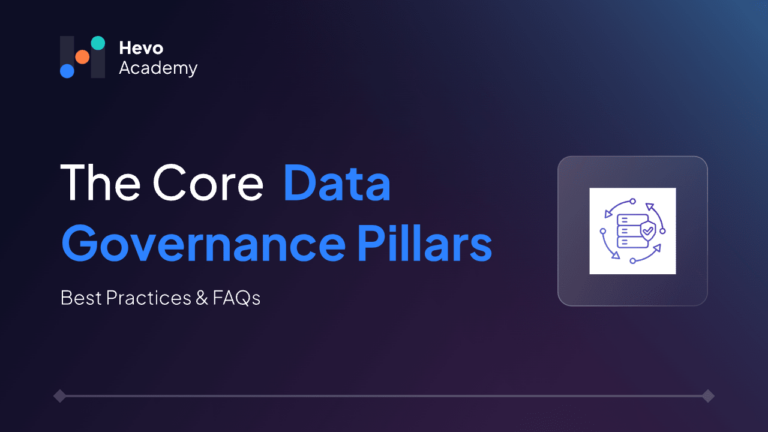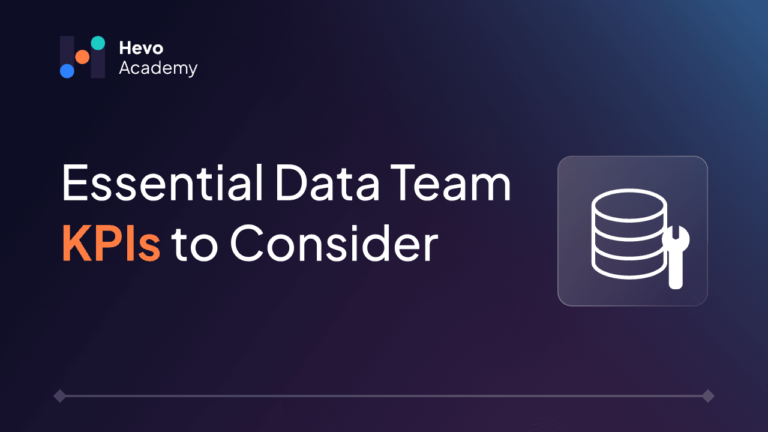Imagine you are building a house. Without a plan, you may get lost and end up with a house that does not fulfill your needs. Therefore, you need a blueprint to convert all your wishes and ideas from your brain to reality. During the building process, it clarifies the requirements for all the designers, builders, plumbers, and workers.
Table of Contents
Similarly, Data Architecture is a blueprint that consists of a set of policies, data models, storage strategies, data structures, and tools that will be used to develop a robust system. It is a plan for how data is managed, processed, and accessed.
In this blog, we will discuss the key data architecture principles, which are essential to designing a solid foundation for your organization’s data needs.
What is Data Architecture?
Data architecture is a blueprint that takes care of data right from where it is generated, and how it travels, gets stored, and is consumed. It consists of data structures, a set of policies, strategies, tools, and technologies that are used during the entire data lifecycle. A good Data architecture ensures data quality and security. It should be able to remove redundant data, cleanse it, and deduplicate it. With changing data needs, It should also be able to handle a variety of data sources and withstand large volumes of data.
Hevo Data, the no-code data integration platform, provides the essential building blocks for sound data architecture. By streamlining data collection, integration, and management, Hevo helps you:
- Synchronize historical data effortlessly
- Automatically map and organize data structures
- Transform data in-flight for better accuracy and consistency
Ensure your data architecture is robust, scalable, and up-to-date with Hevo’s seamless integration. Start your 14-day free trial today and empower your team to build a solid, future-ready data foundation.
Get Started with Hevo for FreeComponents of Data Architecture

Data architecture comprises various components
- Data source: Data sources are the origin point from where data is captured.
- Data ingestion and integration: Data Ingestion and Integration comprises of tools or scripts that pull data from data sources.
- Data storage: Data Storage refers to systems or technologies used to store data. It includes data storage strategies like data lakes, data warehouses, data marts, etc.
- Data processing: Data Processing involves the enrichment of data. It includes cleaning and transforming the data.
- Data security: Data security involves the measures and technologies used to protect data from unauthorized access, breaches, and other threats.
- Data governance: Data governance involves setting up a framework, roles, and policies for storage and access to data.
- Metadata management: Metadata is defined as data about data. It involves the tools and processes used to catalog and organize this information. Data dictionary tools help manage metadata by providing a structured way to define, catalog, and organize data elements, ensuring consistency and clarity.
Importance of Understanding Data Architecture
In today’s competitive world, Data is an asset to any organization. Having an understanding of data architecture principles is equally important as collecting the data. It is essential to make informed decisions about technology investments, abide by compliances, avoid risks, and maintain data quality.
Moreover, as data increases and becomes central to driving business operations, well-designed data architecture principles help prevent data silos, reduce redundancy, and ensure that data is consistent across the organization. Without a clear understanding of data architecture, organizations may struggle with data governance, security risks, and inefficiencies.
Core Data Architecture Principles
Data Architecture principles act as guidelines to help lay out data management plans that can cater to changing business needs. Understanding these principles helps ensure that all the basic requirements of building a robust data platform are taken care of. Below are some of the core data principles:
View data as a shared asset
Data drives business. It is a strategic asset that helps different business departments to derive actionable insights. A well-designed data architecture ensures that data can be shared and is accessible across the organization. It implements access policies, data quality operations, and monitoring so that all the compliances are followed. By viewing data as a shared asset, organizations can avoid silos and ensure consistency in data usage.
Ensure security and access controls
In today’s competitive world, it is important to protect data assets from unauthorized access and breaches. A well-designed data architecture implements robust security measures, including encryption, authentication, and access controls. It ensures that sensitive data is protected while allowing authorized users to access the information they need. Certain countries enforce data protection compliance like GDPR, CCPA, HIPPA, and PCI-DSS which should be kept in mind while developing architecture. Security is a fundamental consideration in every aspect of data architecture.
Establish a common vocabulary
Businesses become successful when everyone speaks the same language. Similar is the case with Data Vocabulary. A common data vocabulary ensures that all stakeholders have a shared understanding of data definitions and terms. It helps in effective communication and collaboration across different departments. Data Catalogs should be built around standardized data definitions so that everyone in the organization stays informed about data assets and speaks the same language.
Curate the data
Data curation involves the process of cleaning, enriching, and organizing data to make it useful and relevant. A well-designed data architecture ensures that proper tools and pipelines are in place to clean, enrich data, and monitor data quality. It ensures that data is accurate, up-to-date, and aligned with business needs. Curated data reduces time juggling with bad records and helps to focus on deriving business value.
Eliminate data copies and movement
Redundant data often leads to false results. Reduction in duplicate data and its movement is important to minimize the risk of data inconsistencies and loss. A well-designed data architecture ensures that data is cleaned, enriched, and stored in a single location. This approach not only improves data integrity but also reduces storage costs.
Modern Data Architecture Trends
Data Architectures have evolved with changing data needs. Modern data problems need modern solutions. Below, we discuss a few modern data architecture trends.
Cloud-Native Architectures
Cloud Native Architectures are built with design methodology where pipelines, storage, and all the tools are set on the cloud. This design offers flexibility, scalability, and cost efficiency of cloud computing. These architectures support distributed data systems and allow organizations to scale their data infrastructure as needed.
Data Mesh
Data Mesh Architectures offer a decentralized way of data management. It is similar to domain-driven architecture where ownership and accountability for data quality are shared within each domain. Each domain-driven data platform is thought of as a data product. It is good for use cases where teams have a large variety of data.
Data Fabric
Data fabric architecture design integrates end-to-end data pipelines and a cloud environment with the help of AI and machine learning. Intelligent systems are used to automate data management processes and ensure that data is accessible and usable across the organization. For example, Data Fabric is popular for IOT use cases where there is a high granularity of data.
Challenges in Implementing Data Architecture Principles
While the discussed data architecture principles bring clarity in building the data architecture, teams may face challenges while implementing them.
Complexity of Integration
Migration from legacy systems is always tough. Integrating legacy systems with modern data architectures can be complex and costly. As a solution teams should start with small, manageable projects to integrate legacy systems with new architectures while gradually scaling up.
Data Governance Issues
With the distributed nature of data, establishing and enforcing data governance policies across the organization can be challenging, particularly in large enterprises. Clear roles and responsibilities should be defined to ensure compliance and consistency across the organization.
Cultural Resistance
Data users may resist change in data architectures, especially when they involve new technologies and processes. Change management programs should be conducted in such a scenario to adapt to the new practices.
Conclusion
Clarity brings speed. To bring businesses up to speed with the power of data, data architecture principles provide clarity as mentors. Understanding and implementing them is an essential stepping stone to effectively manage data. By viewing data as a shared asset, ensuring security, establishing a common vocabulary, curating data, and eliminating unnecessary data movement, organizations can build a strong foundation for data-driven success.
Schedule a personalized demo with Hevo for a robust data architecture.
FAQs
1. What are the key components of data architecture?
Key components of data architecture are data source, data ingestion and integration, data storage, data processing, data security, data governance, and metadata management.
2. What is the difference between data architecture and data governance?
Data architecture refers to the framework and technologies used to manage data, while data governance involves the policies and procedures that ensure data is used effectively and responsibly.
3. What are the 5 data architecture principles?
Viewing data as a shared asset, ensuring security, establishing a common vocabulary, curating data, and eliminating unnecessary data movement are the 5 data architecture principles.

